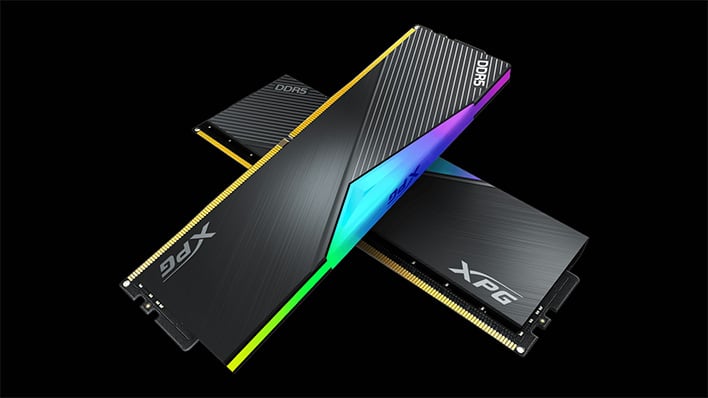Adata Unveils Thermal Coating To Chill DDR5 Memory At 8000MHz And Beyond

Memory manufacturer ADATA has unveiled a new DDR5 thermal coating that reportedly improves the PCB’s cooling capabilities by more than 10%. The new coating is designed to reduce memory temperatures to increase the lifespan and performance of ADATA’s overclocked (XMP/RAMP) DDR5 memory modules. ADATA plans to fully unveil its new DDR5 cooling technology at Computex 2024, but we have some details now. The new coating will launch on ADATA’s Lancer Neon RGB DDR5 memory modules and Lancer RGB series sticks.
Compared to normal overclocked DDR5 “gaming” memory heatsinks, ADATA reports that in real-world testing its memory coating was able to reduce thermals by 8.5C. The coating reportedly features technology that integrates heat conduction, radiation and insulation into an optimized solder mask that better dissipates/conducts heat to achieve greater cooling performance. Basically, ADATA has created a special “paint” that can be applied to its DDR5 modules that helps cool the module, on top of any additional heatsinks that might be applied to the module.
ADATA’s thermal coating seems impressive. A near 9°C thermal reduction would be the equivalent of a full blown cooling upgrade on other system components (like the CPU or GPU). It’ll be interesting to see if more memory manufacturer’s implement this type of cooling technology, or if ADATA will patent it before any of them can engineer their own concoctions.

8.5° of additional headroom will obviously be beneficial for ADATA’s memory modules. Memory is sensitive to thermal output, particularly when pushed to its limits through overclocking. DDR5 is the first memory type that features power delivery components right on the modules themselves, which adds further unwanted heat generation compared to DDR4 modules. Besides overclocking, ADATA’s coating will also be useful in airflow-restricted environments, and help keep the memory cooler compared to normal memory sticks. Mini-ITX and liquid-cooled systems are particularly known for having sub-optimal air circulation around the memory sticks, due to a lack of airflow from either chassis fans or CPU fans.
As previously mentioned, ADATA plans to unveil its new coating at Computex later this year and launch its new coating with its new Lancer Neon RGB and Lancer RGB memory modules. ADATA is limiting the availability of its coating exclusively to its 8000MT/s modules or faster, so if you do want a kit with this new coating, you’ll want to make sure you don’t buy anything under 8000MT/s from ADATA’s qualifying kits.

